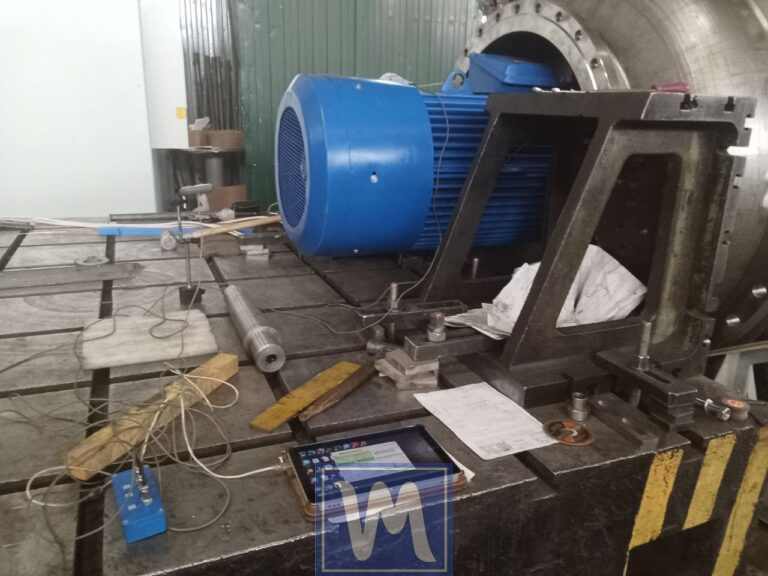
The world of industrial equipment is vast and intricate, akin to a delicate dance of mechanics where every component plays a vital role. Among these intricate parts, fans stand out as essential players, ensuring the flow of air and maintaining optimal operational conditions. Yet, like a dancer who must maintain perfect balance to perform, fans too require the art of balancing to thrive in their environment. This is where dynamic fan balancing comes into the limelight, a process that transcends mere maintenance to embrace the very essence of efficiency and longevity in industrial machinery.
Dynamic fan balancing addresses a crucial concern: the imbalance that can occur in fans during operation. This imbalance often emerges from a variety of factors, including abrasive wear on fan blades, dirt accumulation, loose assembly, or even temperature fluctuations in the housing. When a fan operates with any degree of imbalance, it does not just suffer in silence; the consequences manifest as hazardous vibrations that can jeopardize the structural integrity of the equipment itself. Therefore, understanding the factors that lead to this imbalance becomes paramount in the quest for operational excellence.
The implications of an imbalanced fan extend far beyond mere discomfort during operation. Such imbalances lead to increased energy consumption, potential premature failure of bearings, and unplanned downtimes that can disrupt entire production lines. In contrast, a well-balanced fan unlocks a symphony of benefits: it increases efficiency, reduces operational stress on equipment, extends the lifespan of bearings, and contributes to a quieter working environment. In essence, dynamic fan balancing is not just a technical necessity; it's a pivotal undertaking in the stewardship of industrial machinery.
Nevertheless, dynamic fan balancing is often only sought after when the vibrations have escalated to levels that can no longer be ignored. Experienced professionals acknowledge that balancing should serve as a conclusion to a broader diagnostic journey. Before one can simply apply the remedy of balancing, effective examination and diagnosis of the entire system must take precedence. Factors such as structural failures, misalignments, or any defects must be identified and rectified prior to engaging in the balancing operation. This meticulous procedure ensures that the balancing process not only adheres to the highest standards but also encompasses a holistic understanding of the equipment's condition.
Engaging with the sophisticated machinery of fan balancing requires a nuanced approach. With a portable balancer and vibration analyzer like the Balanset-1A, specialists can execute the balancing process on-site, minimizing disruption. Utilizing the fan's own bearings during the process creates a captivating harmony where precision meets speed, allowing technicians to ensure the machinery operates as intended without laborious disassembly.
The steps involved in dynamic fan balancing are both methodical and elegant, resembling a choreography designed to restore harmony. Technicians will begin by placing sensors strategically on the fan shaft's bearings and the housing to capture vibration data accurately. Depending on the specific design of the fan, adjustments might be made, ensuring that the sensors remain optimally placed to gather vital information. This initial setup is crucial, as it lays the groundwork for subsequent steps, much like the foundation of a building that must be perfectly laid before anything eager is built upon it.
Once the sensors are in place, the dance of dynamic balancing truly begins. The team will install reflective tape on the fan's pulley, ensuring the tachometer can effectively measure rotational speed. With the stage set, the program is started, kicking off the interlude of measurements that will unveil the secrets of vibration and imbalance within the fan. Each rotation of the rotor offers insights, documenting levels of vibration, and indicating where adjustments might be needed.
Through a series of carefully planned measurements, the technician establishes a dual-plane balancing scenario. This phase entails mounting weights in both planes to gauge their effect on balance. As vibrations are assessed iteratively, technicians can pinpoint precisely where to place corrective weights, allowing the fan to find its optimal equilibrium. Each adjustment brings the fan closer to that sweet spot of balance, a place where efficiency reigns and vibrations become mere whispers in the background.
As in all great narratives, the conclusion of the balancing process culminates in a harmonious resolution. Once the final adjustments are made and the fan spins freely, a sense of achievement envelops the space as the mechanical symphony reaches its crescendo. The outcome of skillful dynamic fan balancing is not merely the cessation of harmful vibrations; it also represents a commitment to reliability and enduring efficacy of industrial equipment-an undertaking that champions both prevention and performance.
Therefore, whether dealing with the initial installation of a fan or attending to the needs of an aging piece of machinery, dynamic fan balancing emerges as a vital chapter in the narrative of industrial maintenance. Appreciating the importance of this process accentuates not just the artistry behind precision engineering but also speaks to the broader strategy of ensuring longevity and reliability in all facets of machinery operation.
In conclusion, dynamic fan balancing is not merely a maintenance task; it is a critical aspect of industrial equipment care that embodies efficiency and reliability. Through disciplined diagnostics and responsive adjustments, technicians can preserve the health of fans and, consequently, the machinery they support. Each balancing session, like a well-rehearsed performance, is a testament to the commitment and expertise that drive the industrial world forward, creating a realm where every rotation of the fan echoes harmony rather than discord.
You can read the full article by following this link https://vibromera.eu/example/impellers/ … -impeller/








